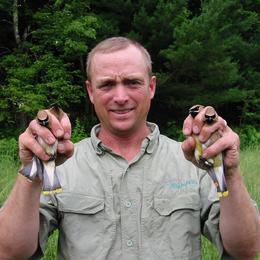
Mark (he/him) has been with Audubon for more than 15 years. His work includes coordinating the Vermont Common Tern Recovery Project, the Green Mountain Audubon Center bird banding station and the Audubon Vermont Conservation Internship Program. He has worked on bird projects from Hawaii to Belize studying everything from albatrosses to catbirds. Mark also oversees the stewardship needs at the Green Mountain Audubon Center. Mark has a B.S. in Wildlife Biology from the University of Vermont and a Master’s in Education from St. Michael's College. He enjoys spending time with his two children, Owein and Mae, and lives in Huntington.